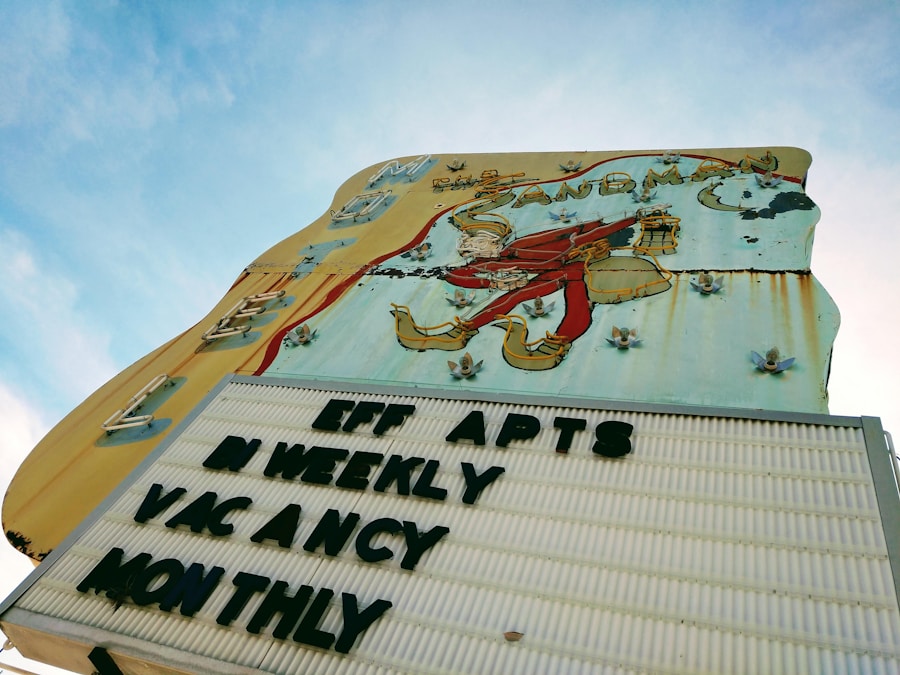Download links
How to install Exploring the Intersection of Arts & Entertainment APK?
1. Tap the downloaded Exploring the Intersection of Arts & Entertainment APK file.
2. Touch install.
3. Follow the steps on the screen.
Description
Arts and entertainment have long served as a mirror reflecting societal values, beliefs, and struggles. From the ancient cave paintings that depicted the daily lives of early humans to contemporary films that tackle complex social issues, the arts have the power to shape public perception and influence cultural norms. For instance, the Harlem Renaissance in the 1920s not only celebrated African American culture but also challenged the prevailing racial stereotypes of the time.
Artists like Langston Hughes and Zora Neale Hurston used their work to advocate for civil rights, thereby inspiring future generations to engage in social justice movements. This historical context illustrates how art can be a catalyst for change, encouraging society to confront uncomfortable truths and embrace diversity. Moreover, entertainment serves as a powerful tool for community building and social cohesion.
For example, the global phenomenon of the Coachella Valley Music and Arts Festival not only showcases a wide array of musical talent but also brings together people from various cultures and walks of life. These gatherings promote dialogue and understanding, allowing attendees to engage with different perspectives.
In this way, arts and entertainment contribute to a sense of belonging and collective identity, reinforcing the idea that creativity can unite rather than divide.
Key Takeaways
- Arts and entertainment have a significant influence on shaping societal norms and values.
- The arts and entertainment industries have evolved to embrace new forms of creativity and expression.
- Technology has played a crucial role in revolutionizing the way arts and entertainment are produced and consumed.
- Diversity and inclusion are essential for creating a more representative and equitable arts and entertainment landscape.
- Engaging with arts and entertainment can have a positive impact on mental health and well-being.
- The future of arts and entertainment will be shaped by emerging trends and innovative technologies.
The Evolution of Arts and Entertainment Industries
The arts and entertainment industries have undergone significant transformations over the centuries, adapting to changes in technology, culture, and consumer preferences. In ancient times, storytelling was primarily an oral tradition, with tales passed down through generations. As societies evolved, so did the mediums through which stories were told.
The invention of the printing press in the 15th century revolutionized literature by making books more accessible to the masses, leading to an explosion of literary works that shaped public discourse. This democratization of knowledge laid the groundwork for modern publishing and paved the way for future artistic movements. The 20th century marked a pivotal moment in the evolution of arts and entertainment, particularly with the advent of film and radio.
The introduction of sound in cinema during the late 1920s transformed the film industry, allowing for a new form of storytelling that captivated audiences worldwide. Similarly, radio emerged as a dominant medium for entertainment and information dissemination, connecting people across vast distances. As television became a household staple in the mid-20th century, it further revolutionized how stories were consumed, leading to the rise of iconic shows that defined cultural moments.
Today, streaming platforms like Netflix and Hulu have disrupted traditional distribution models, offering viewers unprecedented access to a diverse array of content while challenging conventional notions of what constitutes entertainment.
The Role of Technology in Arts and Entertainment

Technology has played an instrumental role in shaping the landscape of arts and entertainment, enabling artists to push boundaries and explore new creative avenues. The rise of digital tools has transformed how art is created, shared, and experienced. For instance, graphic design software such as Adobe Photoshop has empowered artists to experiment with visual elements in ways that were previously unimaginable.
Digital art forms, including animation and virtual reality experiences, have opened up new realms for storytelling that engage audiences on multiple sensory levels. This technological evolution has not only expanded artistic possibilities but has also democratized access to creative expression. Furthermore, technology has revolutionized how audiences consume arts and entertainment.
The proliferation of smartphones and high-speed internet has made it possible for individuals to access a vast library of content at their fingertips. Social media platforms like Instagram and TikTok have become vital spaces for artists to showcase their work and connect with fans directly. This shift has led to the emergence of influencer culture, where individuals can gain significant followings based on their artistic talents or unique perspectives.
Additionally, advancements in artificial intelligence are beginning to influence creative processes, with AI-generated music and art challenging traditional notions of authorship and creativity. As technology continues to evolve, it will undoubtedly shape the future trajectory of arts and entertainment in ways we are only beginning to understand.
Exploring the Diversity and Inclusion in Arts and Entertainment
| Metrics | Statistics |
|---|---|
| Representation of Women in Film | 32% of speaking characters in the top 100 grossing films in 2020 were women |
| Representation of People of Color in Television | BIPOC actors made up 27% of series regulars on broadcast scripted television in the 2020-2021 season |
| Accessibility in Arts and Entertainment | Only 5% of museum collections are accessible online for people with disabilities |
| Income Disparity in the Music Industry | Only 12% of songwriters are women and they earn 9.3 cents for every dollar earned by male songwriters |
Diversity and inclusion have become increasingly important topics within the arts and entertainment industries as stakeholders recognize the need for representation across various dimensions—race, gender, sexuality, ability, and more. Historically marginalized groups have often been underrepresented or misrepresented in mainstream media, leading to calls for greater equity in storytelling. Initiatives such as the #OscarsSoWhite movement highlighted the lack of diversity in Hollywood’s award nominations, prompting industry leaders to reevaluate their practices and commit to more inclusive casting and storytelling.
In recent years, there has been a concerted effort to amplify diverse voices within the arts. Productions like “Hamilton,” which reimagines American history through a multicultural lens, have garnered critical acclaim while challenging traditional narratives. Similarly, streaming platforms have made strides in showcasing international films and series that reflect a broader spectrum of human experiences.
The success of shows like “Pose,” which centers on LGBTQ+ communities of color, demonstrates that audiences are eager for authentic representation. By prioritizing diversity in casting, writing, and production roles, the arts can foster a richer tapestry of stories that resonate with a wider audience.
The Impact of Arts and Entertainment on Mental Health
The relationship between arts and entertainment and mental health is profound and multifaceted. Engaging with creative activities—whether through creating art or consuming it—can serve as a therapeutic outlet for individuals grappling with mental health challenges. Studies have shown that participation in artistic endeavors can reduce symptoms of anxiety and depression while promoting emotional well-being.
For instance, art therapy programs have been implemented in various settings, including hospitals and community centers, providing individuals with a safe space to express their feelings through creative means. Moreover, entertainment serves as a form of escapism that can provide temporary relief from daily stressors. Films, music, and literature allow individuals to immerse themselves in different worlds or narratives that resonate with their own experiences.
The cathartic nature of storytelling can foster empathy and understanding while offering solace during difficult times. For example, many people find comfort in songs that articulate their struggles or films that depict characters overcoming adversity. This connection between art and personal experience underscores the importance of supporting artistic endeavors as a means of enhancing mental health outcomes within communities.
The Future of Arts and Entertainment: Trends and Innovations

As we look toward the future of arts and entertainment, several trends and innovations are poised to reshape the landscape significantly.
These technologies allow audiences to engage with art in unprecedented ways—transforming passive viewers into active participants within dynamic environments.
For instance, VR installations can transport users into fantastical worlds where they can interact with digital elements in real-time, creating a sense of presence that traditional mediums cannot replicate. Additionally, sustainability is becoming an essential consideration within the arts and entertainment industries as creators seek to minimize their environmental impact. From eco-friendly production practices in film to sustainable materials used in theater sets, there is a growing awareness of the need for responsible stewardship of resources.
This shift not only reflects societal values but also resonates with audiences who increasingly prioritize sustainability in their consumption choices. Furthermore, the rise of artificial intelligence is set to revolutionize content creation across various artistic disciplines. AI algorithms are already being used to compose music, generate visual art, and even write scripts—challenging traditional notions of creativity while raising questions about authorship and originality.
As these technologies continue to evolve, they will likely play an integral role in shaping new forms of artistic expression. In conclusion, the future of arts and entertainment is characterized by innovation driven by technology while remaining deeply rooted in cultural narratives that reflect society’s complexities. As these industries continue to evolve, they will undoubtedly play a crucial role in shaping our collective consciousness while fostering connections among individuals across diverse backgrounds.
If you’re a fan of chess and looking for a new twist on the classic game, you should check out TG777 Chess 3. This article discusses a card game version of chess that adds a fun and exciting element to the traditional game. With TG777 Chess 3, players can enjoy the strategic gameplay of chess in a whole new way. For more information on this innovative game, you can read the full article here.
FAQs
What is considered arts & entertainment?
Arts & entertainment encompasses a wide range of creative activities, including visual arts, performing arts, music, literature, film, television, and other forms of media.
What are some examples of arts & entertainment?
Examples of arts & entertainment include painting, sculpture, dance, theater, opera, music concerts, literature readings, film screenings, television shows, and other cultural events and activities.
How does arts & entertainment contribute to society?
Arts & entertainment play a significant role in society by providing cultural enrichment, entertainment, and opportunities for creative expression. They also contribute to economic growth and tourism in many communities.
What are the different types of performing arts?
Performing arts include dance, theater, opera, and music. These art forms involve live performances by artists and often require specialized training and skill.
What is the significance of visual arts in society?
Visual arts, such as painting, sculpture, and photography, contribute to the cultural and aesthetic development of society. They also serve as a means of creative expression and communication.
How does entertainment impact popular culture?
Entertainment, including film, television, and music, has a significant influence on popular culture by shaping trends, influencing fashion, and reflecting societal values and norms.





